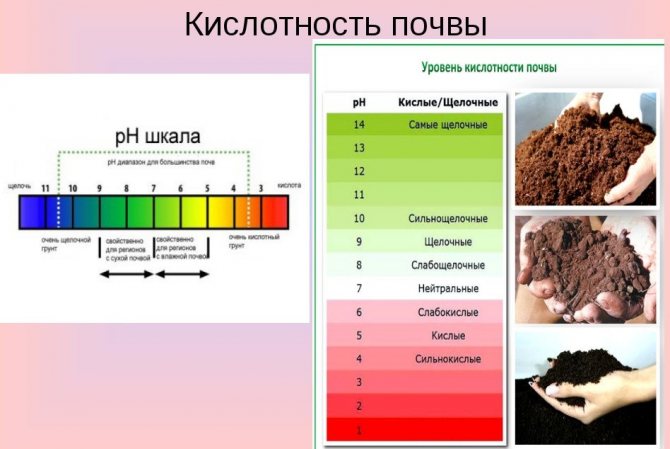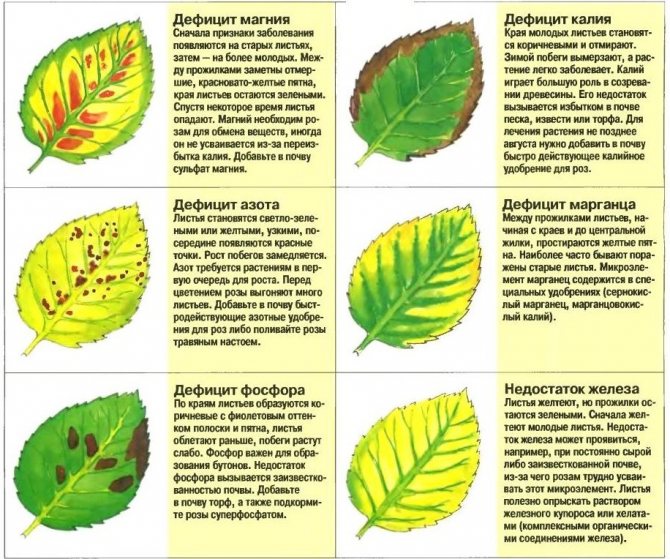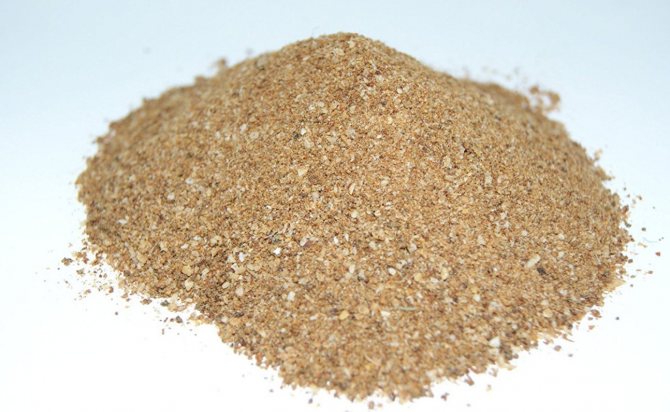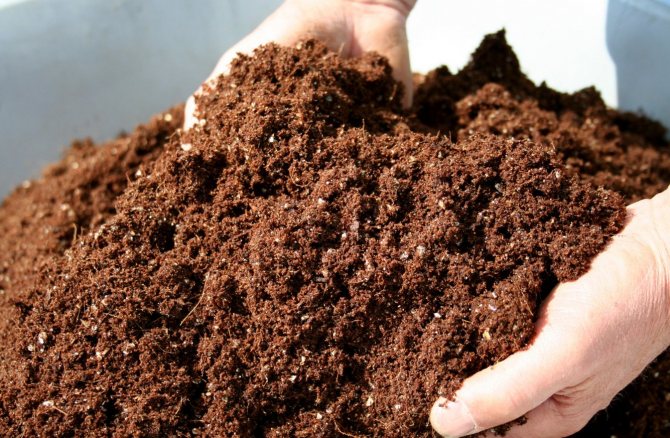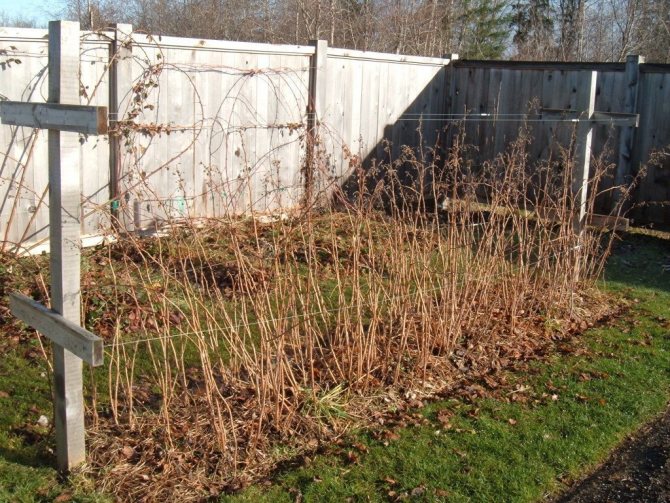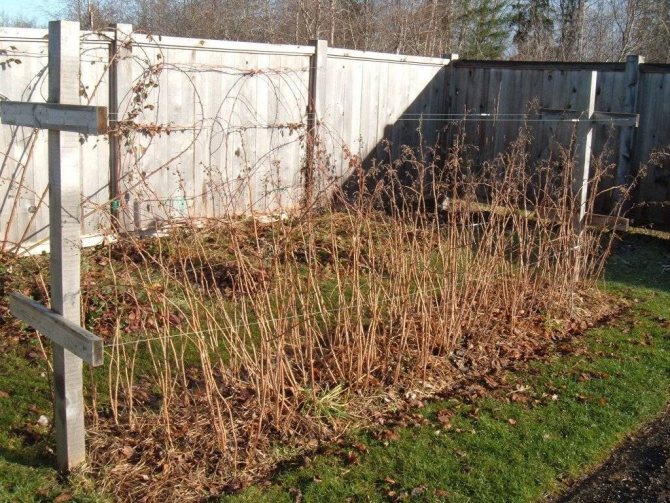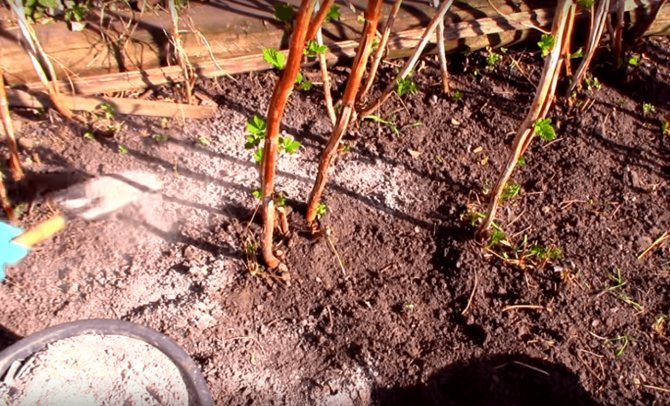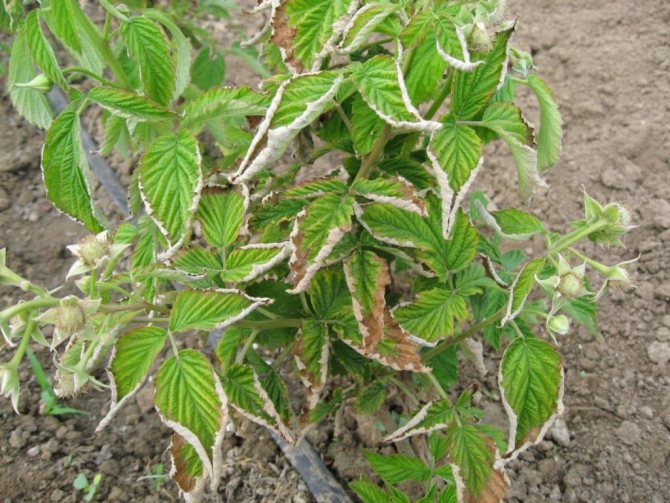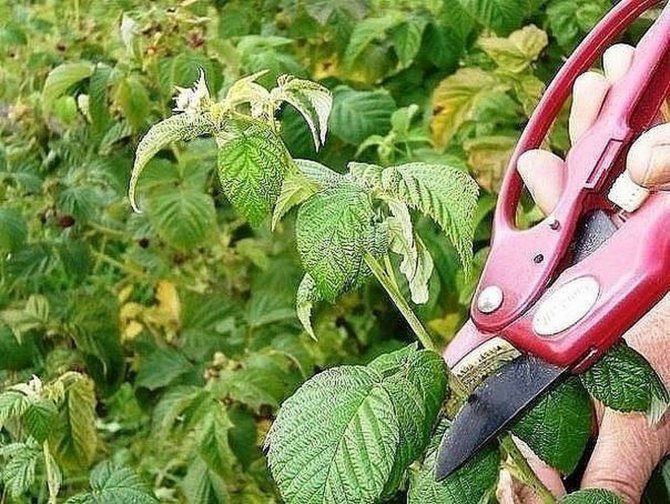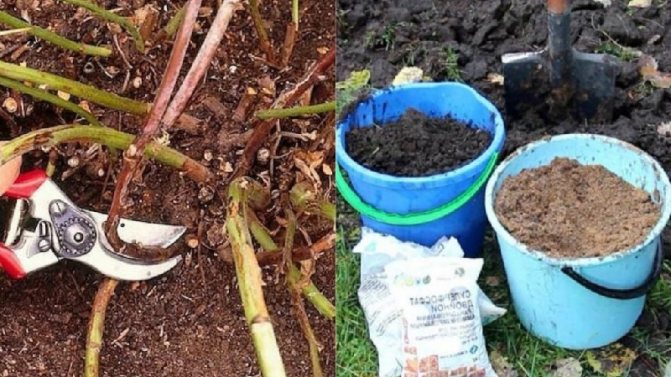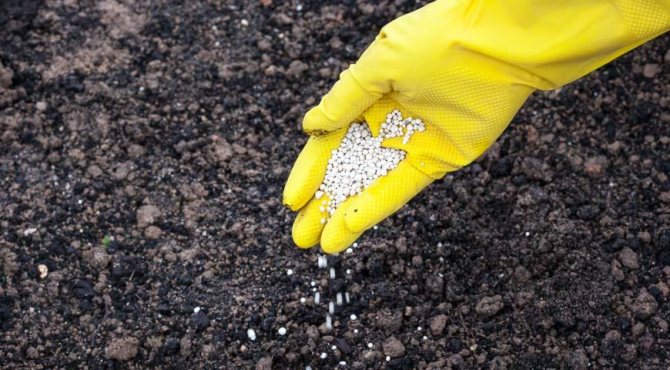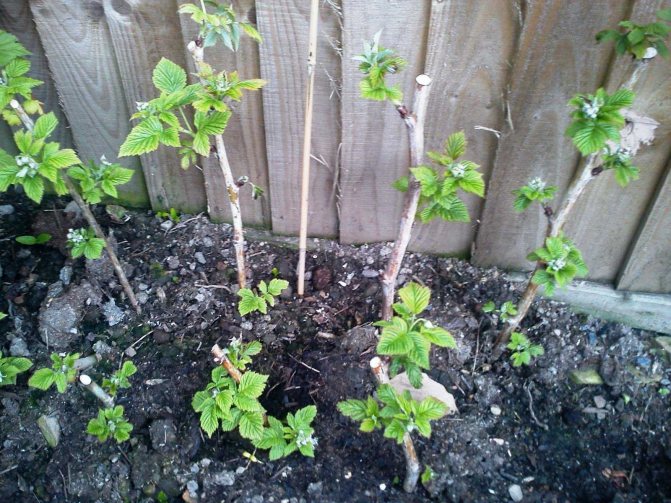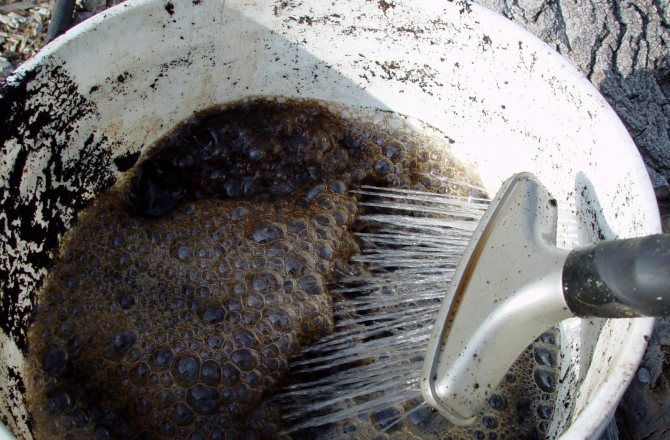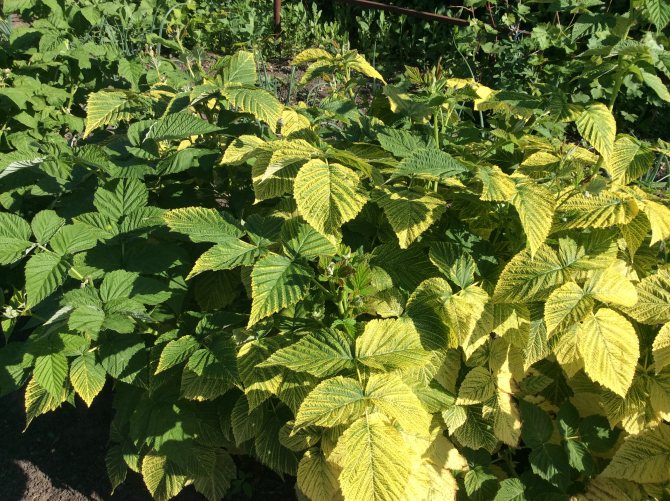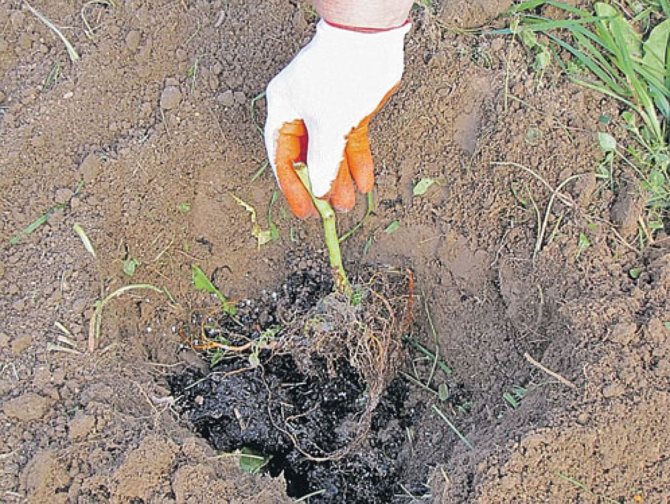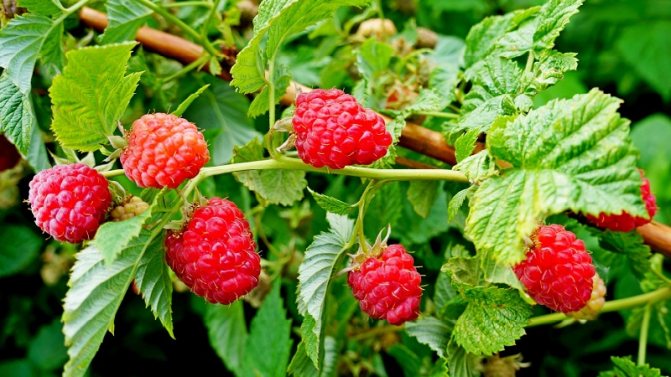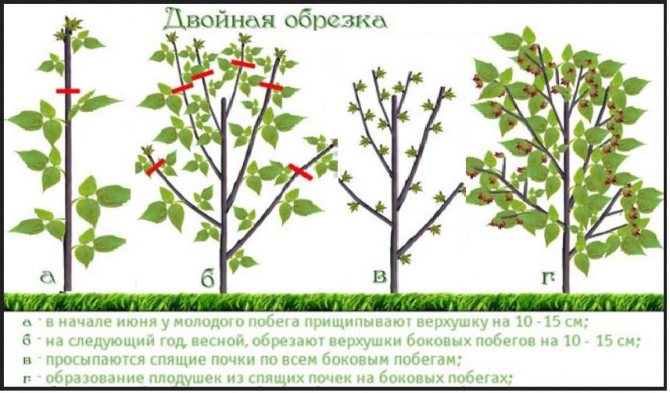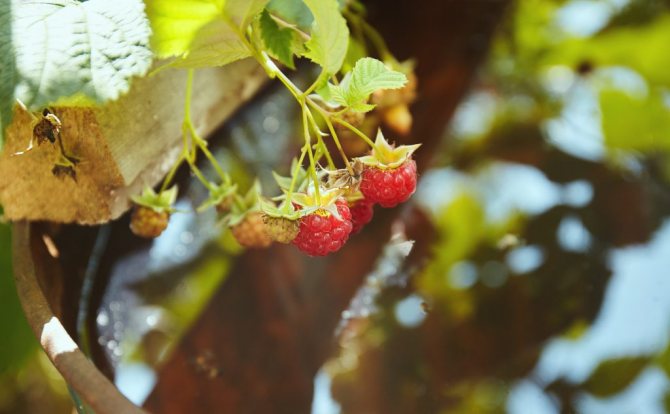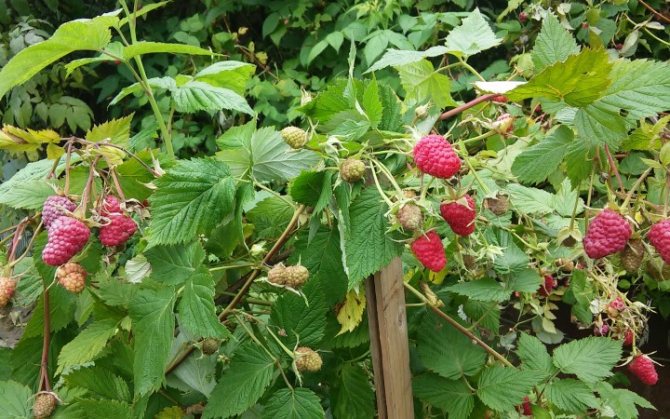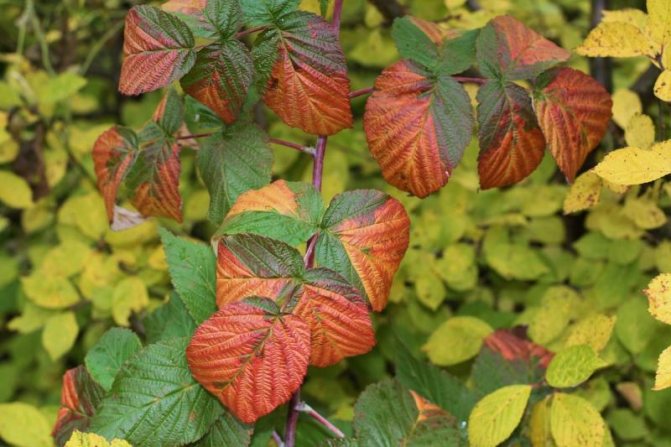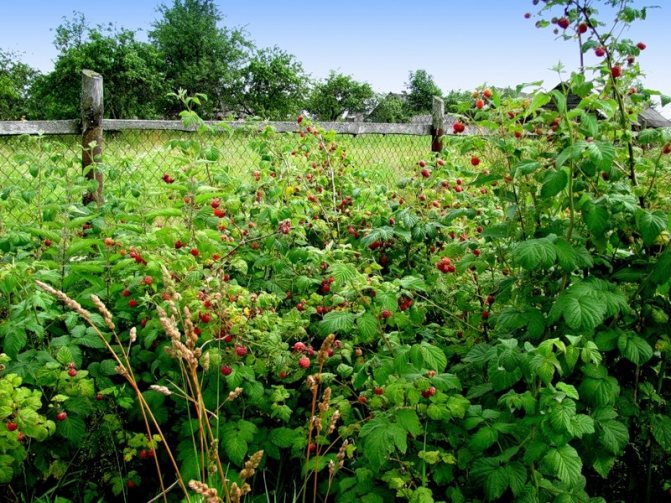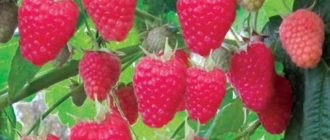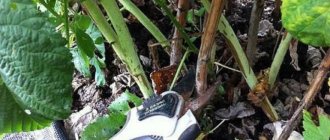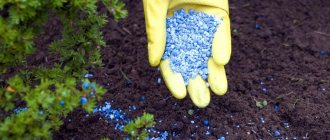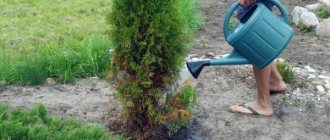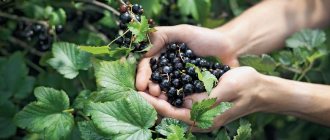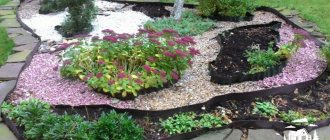Raspberries are one of the most beloved and useful berries in Russia from the Far East to Moscow. In order for the harvest to please with abundance every year, the crop must be properly looked after, namely fed. Many novice gardeners have the question of how to feed raspberries in the fall. There are a lot of options, the main thing is that the fertilizer contains the necessary trace elements. It is also important to feed the plant on time.
- 2 Terms of feeding by region
2.1 Time of work by region: table
- 4.1 Fertilizer dosage: table
Top dressing of raspberries in the fall: how it is carried out, types of effective fertilizers
After harvesting raspberries, she needs food to restore strength and productivity, because it is in the fall that plants lay buds for the next season. If you leave the bushes unattended, then spring fertilizers will not be able to fully compensate for the lack of fertilizers in the fall.
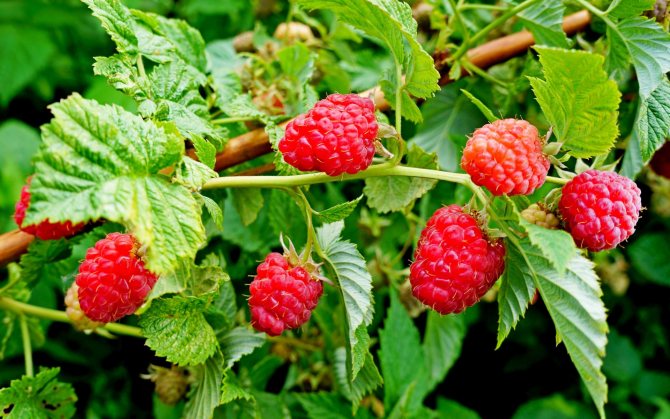
In the post-harvest period, you need to wait a little until the plant calms down. What does it mean: the movement of juices along the stems will stop or slow down. Berry bushes, which give one wave of the harvest, stop their activity in July. It is still very warm so that the movement of juices completely stops. Repaired varieties during this period are preparing for the second harvest, therefore, fertilizing is necessary for both.
Number of seasonal dressings
When creating a schedule for garden work with a raspberry tree, take into account not only the growing season, but also remember that:
- excessively humid summer, spring contribute to the leaching of the introduced microelements. At the same time, airtightness deteriorates, leading to damage to the roots of the bush;
- dry summer, lack of sufficient watering also does not bring anything good: there is a slowdown in the intake of useful trace elements;
- already in spring, the root system of raspberries begins to develop actively, requiring additional substances to strengthen, restore the immune system after hibernation.
Based on this, the application calendar may change. The main seasonal periods remain:
- landing or wake-up time;
- flowering, the appearance of ovaries;
- additional activities in the summer (if necessary);
- after harvest;
- autumn feeding as preparatory work before wintering.
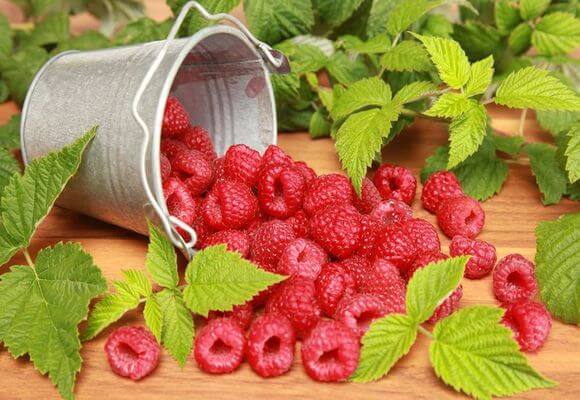

The recommended amount is 4-5 times during the growing season. For conventional and remontant varieties, the application schedule changes due to the type of soil, climatic features:
When to fertilize your raspberry plantation
For ordinary varieties, care begins in late July and early August. First, pruning is carried out, then abundant watering and fertilization for raspberries - in the fall, all that remains is to mulch the soil in order to reduce moisture evaporation.
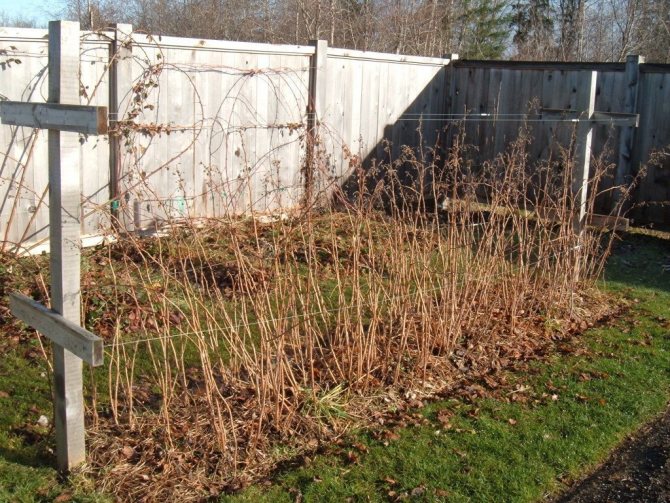

How to feed remontant raspberries in September, will tell you the appearance of the plant:
- the edges of the leaves dried up, and the berries of the second harvest were sour - potassium deficiency;
- thin shoots and small leaves - it's time to add phosphates.
Top dressing of raspberries in the fall is carried out with those fertilizers that most fully correspond to the state of the soil. If organic matter was introduced a long time ago, 2 - 3 years ago, then it is time to restore the fertile layer. For raspberries, this is important, since their root system is in the upper soil layer, and it must be enriched with minerals and organics.
How to feed raspberries in the fall after pruning, using organic substances:
- Wood ash. The content of potassium and phosphorus in this substance is maximum. Ash is used dry or insisted on water. Then it is evenly distributed in the raspberries and sprinkled with soil. Plant residues serve as food for beneficial soil bacteria, which create a fertile layer. Quantity per square meter - 300 g per bucket of water, leave for 3-4 days. Make a depression around the bush and pour the solution there, cover it with earth.
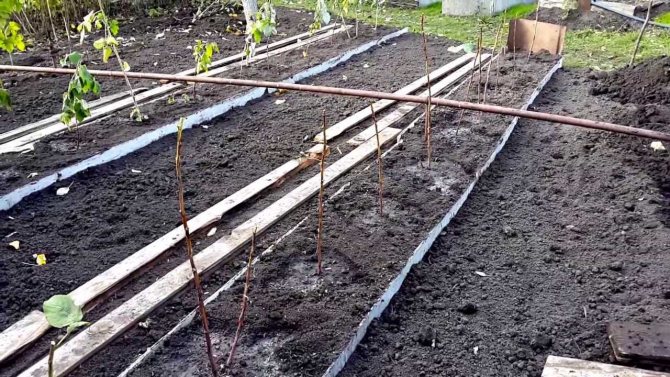

- Bone flour. Contains phosphorus, calcium and trace elements. A feeding for raspberries is introduced in the fall in a dry form, after which 2 - 3 years you can not fertilize the soil with phosphates. Bone waste dissolves for a long time and constantly release nutrients into the soil.
- Siderata for raspberries in autumn - an alternative to manure, but much cheaper. You can sow lupine, clover, vetch, cereals between the bushes, and in winter, cut and mulch the soil with greens. To accelerate decomposition, the green manure layer is covered with straw and watered. When to plant green manures for raspberries depends on the climate: for their growth, there should be a margin of time of 1.5 - 2 months.
- The manure is used semi-rotted or rotted so that the nitrogen content meets the autumn standards. Fresh substance is not used due to the large amount of ammonia, which stimulates the growth of the shoots. In the fall, this is not necessary, since the new branches will not have time to woody and will die in the frost. This is a dangerous bacterial or fungal infection of the entire plantation.
Organic matter - these are the substances with which you can feed raspberries in August, because before the onset of cold weather another 2 - 3 months and organic matter will have time to partially decompose and support the root system.
After trimming
Autumn pruning consists not only in cutting off the fruit-bearing branches at the root, but also in thinning the raspberry tree. It is not recommended to leave the leaves for the winter, because they will rot. Let's leave only young healthy stems up to 40 centimeters long.
The cut branches must be tied into bunches, bent down to the ground and tied to the bottom of a neighboring bush. This is necessary so that in winter they are wrapped in snow, otherwise our plants will freeze.
Feeding raspberries in the fall after pruning is the task with which we figured out above. It remains only for us to dwell on the intricacies of autumn care for varieties of remontant raspberries.
Minerals for raspberry
Autumn feeding of raspberries in winter can be carried out with mineral mixtures - one-component or two-component. Essential substances are phosphates and potassium, so that the plants overwinter well.
How to fertilize raspberries in the fall, using purchased mixtures:
- superphosphate- 40 g per square meter dry but it is better to prepare a solution by pouring boiling water over the granules and waiting for complete dissolution;
- potassium sulfate - 30 g per square meter;
- potassium magnesium - a natural mineral that, in addition to potassium, contains magnesium and sulfur.
Feeding raspberries in August can be done with potassium chloride. Not all plants love it, since it inhibits their growth, but in the fall, potassium chloride can be added, since the chlorine will have time to erode and will not harm the plants.
Combined mixtures, than to fertilize raspberries in the fall, must be selected in the correct proportions. The percentage of nitrogen should be less, potassium and phosphorus - more, because they are responsible for the wintering of the raspberry tree.
It is not recommended to use only mineral fertilizers for more than 4 years, since the soil is depleted without organic additives, the upper layer quickly gives off moisture and cracks, which negatively affects the general condition of plants with a superficial root system.
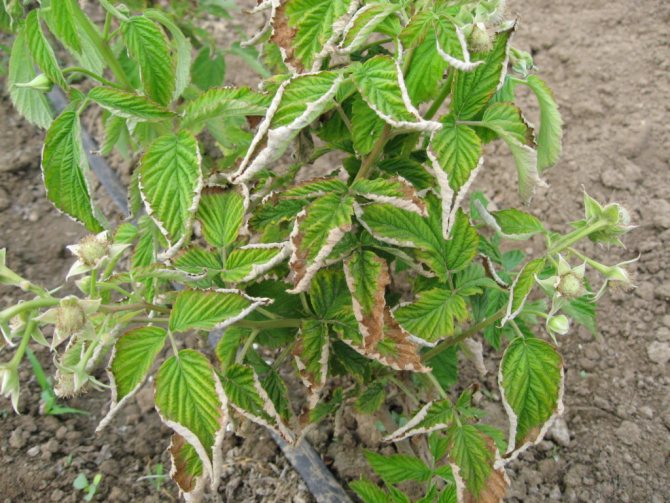

Therefore, the best option for feeding raspberries in August-September is combined fertilizers - organic and mineral.
Common Beginner Mistakes
Literally all gardeners make mistakes, not just beginner farmers. The most common are:
- Desire to apply more than the recommended fertilizer dose. Oversupply leads to increased growth. But the complete absence of berries.
- Violation of the timing of feeding. The position: "it will come in handy anyway" - here only to the detriment.
- Lack of dressing in the fall. Always leave mulch or insulation for the winter. And also to carry out strengthening procedures so that the raspberries overwinter calmly.
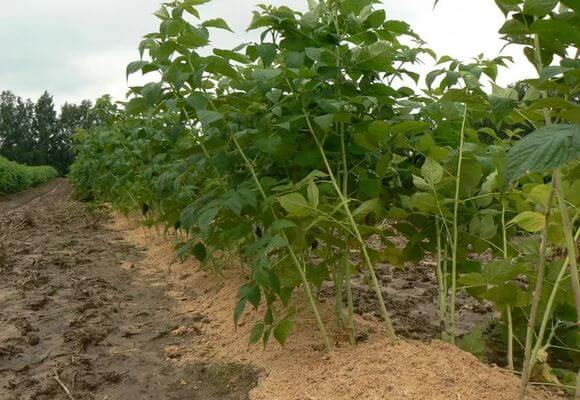

Fertilizing raspberries when transplanting in the fall
The shrub is transplanted in early August so that young plants have time to take root in a new place.
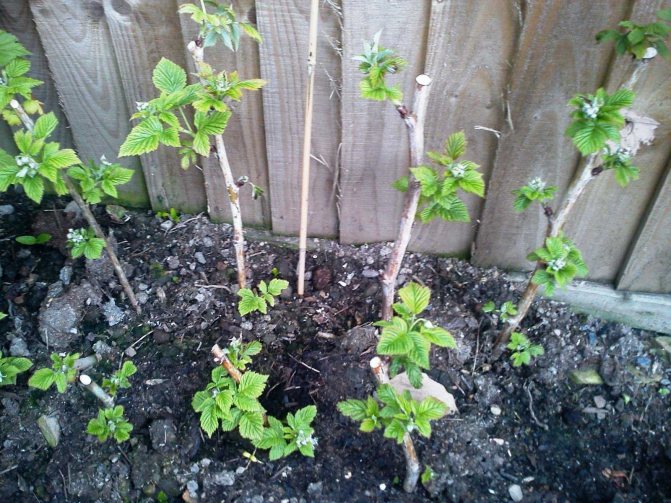

Fertilizers when planting raspberries in the fall are applied to the hole. It can be rotted manure, composted, based on peat or with the addition of river silt, mineral mixtures.
After planting, no fertilizers are applied on chernozems for 2 - 3 years. If the soil in the region or on the site is sandy, then you will have to make top dressing regularly, since the nutrients do not stay in the sand, but are washed out into the lower layers, from where the short raspberry roots cannot get food. On sandy soils, the total amount of dressings is divided by three and applied in small portions.
Additional tips and tricks
To increase the yield, it is not enough to plant or water the raspberries, but you also cannot overdo it with fertilizing. Therefore, it is worth adhering to strict feeding regulations, carrying out according to the introduction scheme, and preparing the mixture correctly.
Their additional tips, which are often overlooked by experienced gardeners, are worth pointing out:
- Always use organic fertilizers when planting or transplanting raspberries. They are enough for 2-3 years.
- Always check the expiration dates of the purchased products in the store.
- Raspberries don't like chlorine. Therefore, the composition of fertilizers should not contain it as one of the components. Even in small quantities.
The maximum effect on growing and harvesting raspberries can be achieved if you follow the advice and consistently apply top dressing. But before starting work, be sure to check the need for additions to determine which element is missing for the development of the culture.
For beginner gardeners about raspberries
For novice gardeners, feeding raspberries in the fall may seem like a completely unnecessary action that takes time and effort. On rich soils, yes. The first two harvests will be excellent, especially if the plants are varietal. The further you go, the less sweet the berries will be and the more you will have to tinker with diseases and pests.
Video: What and when to feed raspberries
The growth process can be compared to the activity of the human body, which requires the main components of nutrition - proteins, fats and carbohydrates. In plants, these are nitrogen, potassium and phosphorus. At the same time, it is difficult for a person to maintain immunity without vitamins. In plants, the role of vitamins is played by trace elements, which are necessary in small quantities, but the benefits of them are tangible.
Before exertion, a person is given high-calorie food so that the body can withstand. Plants also need nutrition, since they are stressed by the cold season.
Nuances of remontant raspberries
Growing remontant raspberries allows you to harvest two whole crops per year - one in the first summer month, the other in autumn.But this undeniable advantage also requires careful maintenance, different from the hassle of traditional sweet berry varieties.
If October is suitable for pruning simple varieties, then the remontant raspberry bushes still bear fruit in mid-autumn, so the dates are postponed to the end of November.
If you really want to get two generous harvests, you should remove:
- weak offspring, unable to withstand the winter;
- two-year-old branches that have borne their own;
- the tops of those annual shoots that have borne fruit.
In turn, freshly planted bushes should not be completely cut off.
The main types of raspberries
In most cases, three types of raspberries can be found in our gardens.
- Traditional raspberry, which has developed the highest resistance to environmental factors. It gives a normal harvest, its berries are medium in size - about four grams. The shrub gives a strong growth of the root system.
- Repaired raspberries are the most productive species. The shrub is very well adapted to wintering. It is recommended to cut the branches to the very root in order to stimulate the plant's yield for the next year and to minimize the likelihood of infection with various diseases.
- Large-fruited raspberries, as the name implies, have the largest berries in size, up to 14 grams or more. The berries are of excellent quality - they are very tasty and aromatic. The harvest is generally good and the berries are very easy to transport.
Important: different varieties of raspberries can be planted next to each other, this will not affect the quality of the crop in any way, and no over-pollination occurs.
Raspberry bucket - for a bucket of manure
Under natural conditions, raspberries tend to grow where the soil is rich in humus. This means that garden raspberries, finding themselves in such conditions, will thank you a hundredfold. That is why before the peasants dumped straw manure from the barn onto the plantings. Such a technique made it possible to maintain soil fertility with minimal effort. And at the same time, and sharply reduce the number of a dangerous pest - the raspberry beetle. By the way, it is much easier to deal with it in autumn.
In modern conditions, one has to either buy and then compost manure, or make humus from weeds, cut grass, household kitchen waste, foliage and peat. A very good addition to compost is bird droppings.
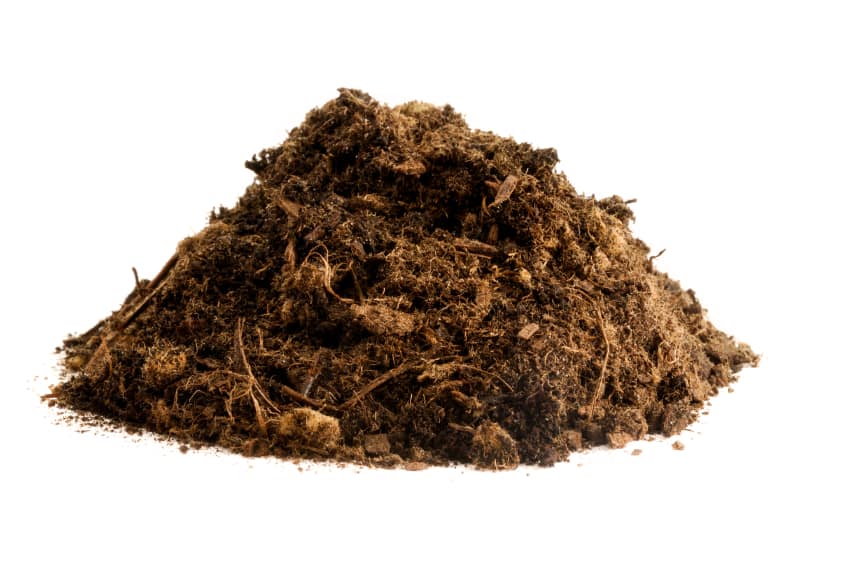

Humus
How much organic is needed? For each square meter of raspberries, at least once every 2-3 years, it is advisable to pour 3-5 buckets of fertilizer. The result will be visible to the naked eye already next year. It will not be superfluous to throw another two or three handfuls of ash - and all this is embedded in the soil.
By the way, when digging the land under the plantings of raspberries, most of the population of the raspberry beetle perishes. After all, the larvae pupate not far from their "dining room". Turning over the same layer of earth, you literally throw pests out into the cold. And thus, feeding your plantings, at the same time you get rid of the annoying "worms" in the berries.
Preparing for landing


The soil for planting raspberries must be prepared in advance, and if planting is planned for the fall, it is necessary to carry out preparatory work a month and a half before them. If the soil has high acidity, it is necessary to deacidify it. In this case, when carrying out digging, dolomite flour, cement dust or slaked lime must be added to the soil. If the PH of the soil is above seven, it is necessary, on the contrary, to acidify. Then peat, sulfur, organic liquid acids are added.
In the process of digging, it is recommended to apply fertilizers in the following composition. Phosphorus - about 30 grams, potassium - 20 grams and ten kilograms of organic base - it can be compost, chicken droppings, humus, peat, green fertilizers.
Before planting seedlings in dug trenches, it is necessary to lay fertilizers.With normal, nutritious soil, you can not be zealous with feeding, but limit yourself to laying only organic fertilizers in a hole to a depth of thirty centimeters.
Potash and phosphorus fertilizers are used for planting inorganic materials. They accelerate the regeneration processes in the root system. And top dressing with nitrogen components is not used - these substances significantly interfere with the rooting of plants. Instead of mineral fertilizers, you can add wood ash.
Before planting raspberries, you can use this fertilizer ratio recipe. Take 140 grams of superphosphate, 60 grams of potassium sulfide, a bucket of wood ash, and two buckets of humus.
On soil depleted in nutrients, this feeding rate should be doubled. In spring, plants also require more nutrition, so the amount of fertilizer at this time is tripled. If in the fall the preparatory work on the soil was carried out carefully, then in the spring only organic mixtures can be added.
The use of ash for the preparation of liquid top dressing
Plants absorb nutrients most quickly from solutions. In practice, gardeners use root and leaf liquid top dressing.
It is interesting! Top dressing "on a green leaf" is assimilated within 4 hours, while the result of root dressing with dry fertilizers appears only after a few days.
Ash extract (simple recipe)
- 1 glass of ash per 10 liters. leave water for 2-3 days.
- Apply for irrigation of 1.5 ... 2.0 liters. on the bush.
- For top dressing "on a green leaf", the solution is diluted with water 3 ... 4 times.
- When stored unopened, the solution retains its properties for 1-2 months.
Fertilizers Organic
When organic fertilizers are applied to the soil, it heals, its fertility increases, the earth becomes a source of many substances necessary for raspberries. Organic matter is applied in autumn and spring. In spring it is best to use peat, rotted manure, compost. And in the fall, fresh organic matter will be good, which is abundant during this period: grass, fallen apples, leaves.
Let's take a look at the basic organic fertilizers that raspberries love.
- Peat - increases the acidity of the soil. The soil, fed with peat, becomes lighter, more airy. The best effect is achieved by mixing peat with mineral fertilizers, ash and manure. There are several types of peat - high-moor, low-lying and medium.
- Ash is what remains after burning trees and herbs. This fertilizer is potash, it also contains zinc, phosphorus and some other elements. May deoxidize the soil. Ash introduced into the soil activates the microorganisms contained there, resulting in better absorption of nutrients by the shrubs. For feeding with ash, small grooves are pulled out along the perimeter of the plant. Then a liquid is poured into them, consisting of two glasses of ash, diluted in a bucket of water.
- Mullein is a fertilizer that is a waste product of livestock. Mullein contains large amounts of phosphorus, calcium, magnesium, potassium and other substances. Fertilizer is prepared for raspberries as follows. Take a fresh ¼ bucket mullein and dilute it with a bucket of water, then leave the mixture to mature for a couple of days in a warm place. The nutrient fluid is again diluted with four buckets of water and applied under each plant in an amount of up to four liters.
- Chicken manure is a rather aggressive fertilizer, therefore it is always diluted with water. Contains nitrogen, phosphorus, potassium and carbon dioxide, which improves the quality of the soil. The droppings are washed out of the soil for a long time.
The negative consequences of feeding with ash
Novice gardeners have heard about the dangers of overuse of fertilizers and are not always aware that ordinary deciduous ash is safe for plants.The clarification about hardwood is not accidental.
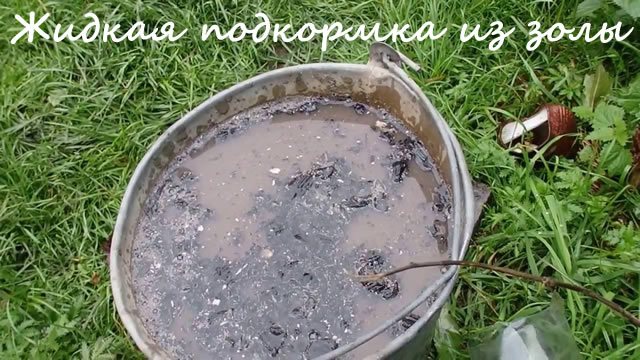

Attention!
When coniferous wood is burned, part of the resins and volatile substances remain in the ash, which inhibit the growth of any plant and destroy beneficial soil microorganisms. As a result, root nutrition is disturbed and the structure of the soil deteriorates.
In the course of evolution, the forest raspberry has adapted to feeding on products left after the combustion of wood. It is no coincidence that such lush vegetation grows on the site of forest fires. This is also the result of feeding the plants with ash.
The cultural relative of wild raspberries does not differ in any peculiarities of metabolic processes and in the same way gratefully responds to feeding with ash with healthy growth of the bush, good yield, excellent taste and aroma of berries. like her forest cousin.
Mineral fertilizers
This type of fertilizer has a good effect on the yield of raspberries, makes the soil fertile. The most important elements for the development of raspberries are nitrogen, potassium and phosphorus.
Nitrogen fertilizers are ammonium nitrate, nitroammofoska, urea, ammonium sulfate. Such supplements are most relevant in the spring. But it is necessary to strictly observe the dosage of such fertilizers, since their surpluses can accumulate in the form of nitrates.
Potash fertilizers include potassium chloride, potassium sulfate, potassium nitrate. They have a good effect on the growth of the root system, improve the ability of plants to absorb moisture from the soil, and contribute to better wintering of shrubs. Potassium-containing additives are applied in the fall, deepening into the soil by 10-15 centimeters.
Phosphate fertilizers are phosphoric flour, superphosphate. These fertilizers include ammonium and calcium salts in their composition, which stimulate flowering and fruiting. The berries are more aromatic, tastier. The shrub becomes more resistant to pests and various diseases. Phosphorus is applied at any time, but it will be most effective at the beginning of the growing season.
Signs of need for feeding
It is necessary to feed garden and garden plants regularly, make changes to the gardener's calendar in order to accurately make calculations. But in most cases, raspberries are forgotten due to the belief in their strong immunity. In fact, the berry requires attention, although the care is different from other berry crops.
The root system absorbs many useful microelements from the ground. Like all crops, raspberries need nitrogen, potassium and phosphorus. It is possible to determine the deficiency or excess of an element by the state of the green part and the size of the berries.
The signs are visible to the naked eye, and even a novice summer resident can apply them. During the inspection of the culture, attention is paid to the following phenomena:
- the speed of development and growth of shoots. Excessively fast - a lot of nitrogen, the intensity is significantly reduced - a lack of an element;
- dryness of the stem indicates insufficient amounts of iron and magnesium in the soil. It means that there are not enough of them for the plant either;
- with a phosphorus deficiency, streaks and spots appear on the green part. Color: burgundy purple;
- small berries, brown leaves - potassium is urgently needed for recovery;
- the thinness of the stem, poor development of the shrub - to correct the position of nitrogen.
Raspberries are really capable of bringing a bountiful, large harvest for a long time. She loves moisture, sun. Absolutely not afraid of direct sunlight.
Any gardener can make ordinary raspberries remontant, but for this they apply fertilizers, various organic fertilizing, transplant and monitor the state of culture development.
Popular fertilizers
Let's take a closer look at the most common fertilizers that have proven their effectiveness and are successfully used for feeding raspberries.
Nitroammofoska - has been used by gardeners for more than a dozen years. It is a complete mineral fertilizer containing three main elements - potassium, nitrogen and phosphorus.The ratio of these elements may be different, it depends on the manufacturer. In the spring, this fertilizer is very important when planting raspberries.
Superphosphate - fertilizer, the main components of which are sulfur, calcium and magnesium salts. It is produced in the form of granular or powder. It is mainly used in autumn, but can also be used in spring or summer for feeding raspberries.
Kristalon - contains elements such as potassium, manganese, phosphorus and nitrogen. Produced in Holland. This fertilizer is safe, under its influence, the growth of the root system is activated, the growth of young shoots is improved, and the plant's immunity is increased. Kristalon is used in summer and spring and can be used both as root feeding and as a foliar method.
Omu - chlorine-free organomineral fertilizer, the composition of which is represented by phosphorus, manganese, zinc, potassium, nitrogen, humus. Such dressing has a good effect on the condition of the soil, improves the growth of raspberries. The consumption of the product is about 60 grams of powder per square meter of planting.
Roots under a fur coat
After adding all the batteries, the ground must be covered. Bare, free from weeds, it will dry out quickly. And in raspberries, the bulk of the roots are very shallow.
And the moisture deficit will instantly affect the number of flower buds that form and the winter hardiness of the bush.
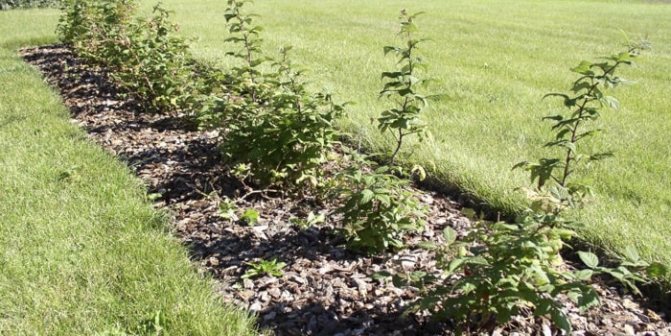

Raspberry care
Any organic material is suitable for mulching. What kind? Husks of seeds and grass chaff left over from a lawnmower, hay or straw and foliage collected in the nearest forest. Just do not cover the plantings with fallen leaves from your garden or tops from vegetable beds: pathogens of dangerous diseases can remain on it. It is not necessary to make a layer of mulch very thick - 10-15 cm will be enough. Rotting, it also turns into fertilizer.
And the last thing: due to the moisture deficit in recent years, plants definitely need moisture-charging irrigation in the fall. This is due to the fact that the active growth of the root system begins only after the growth of the shoots stops. In dry soil, the roots finish development ahead of time, and the bush hibernates in a weakened state. As a result, even after a not very frosty winter, the planting will look very sad.
The best time for such watering is the second half of September. Only after prolonged droughts (such as in 2010) should the irrigation period be moved to the end of the month so as not to cause a secondary growth of the aboveground part.
But what is water-charging irrigation? It's not just two buckets per bush. It is important to saturate the entire root volume with moisture, and for raspberries it is 30-35 cm. This means that you will have to pour out about 50 liters of water for each plant.
Organic feeding: planting a plant in the fall
Autumn care and fertilization of raspberries is a very important step. It does not require any special skills and does not cause difficulties even for a novice gardener. And it is worth spending a few hours on your raspberry tree so that next year you can enjoy a juicy, sweet, fragrant berry to your heart's content and prepare it for the winter.
Top dressing raspberries in the fall
Prolonged summer fruiting of raspberries, especially if this process has taken place more than once, significantly depletes the soil. Therefore, it is very important, before the first frosts hit, to feed the raspberry soil again. In autumn, fertilization is best applied in September.
Humus, compost or other organic matter is introduced, or a special mixture with a complex composition including potassium and phosphorus, for example, ammonium sulfate. A mixture of superphosphate in the amount of 60 grams and 40 grams of potassium salt is allowed. The soil must be loosened, and then scatter the fertilizer granules evenly over the soil. Then this layer is lightly sprinkled with earth on top.
Important: in the autumn, it is better to use mineral fertilizers, as they stimulate the formation and development of fruit buds.
If the planting of raspberries occurs in the fall, then it is better to postpone nitrogen fertilizers, and feed them exclusively with organic matter. This is due to the fact that nitrogen triggers the growth of green mass. You yourself understand that this is not advisable before winter and, moreover, greatly weakens young plants. Even in the fall, you need to mulch the ground in a fresh raspberry berry with peat or humus.
An attentive gardener by appearance can determine what the shrub is lacking. By reacting in time and feeding the plants correctly, you can save even the weakest bushes and get a good harvest.
Do I need autumn feeding
The most important thing for plants is the root system. The deeper it is, the better the culture tolerates frost. In raspberries, this system is shallow, and therefore you should help the shrub prepare for the coming winter. Feeding the plant in the fall is part of its preparation for future frosts. The soil should be fertilized starting in spring and throughout the year, but it is the autumn work that is the key to a good harvest in the next season.
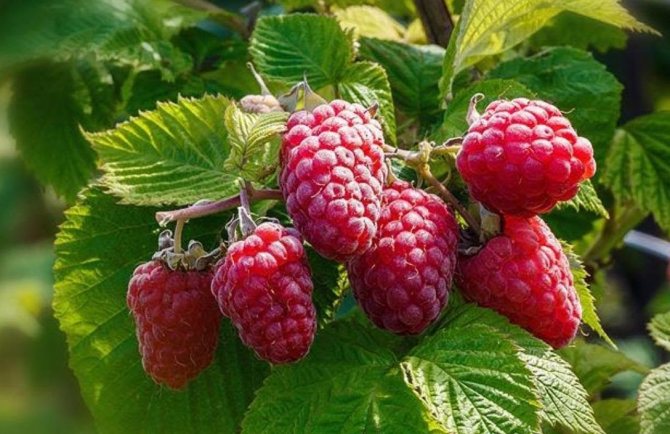

For feeding raspberries, you can use both liquid and granular products.
Any gardener will determine that the plant needs additional nutrition by the appearance of the shrub. The main signs of a lack of fertilizer are:
- Weak and thin shoots - indicate a lack of phosphorus.
- Yellow leaves with green veins - indicates a lack of iron.
- Leaves that begin to turn yellow from the middle to the edges at a high rate are a consequence of a magnesium deficiency.
- Brown, as if burnt along the edges of the leaves - indicate a lack of potassium.
- Small yellow foliage - for a lack of nitrogen.
- Dark color of shoots and leaves - for excess nitrogen.
How to feed raspberries in the fall after harvesting and pruning
Adding an article to a new collection
During intensive growth and fruiting, the bushes took a large amount of nutrients from the soil. Therefore, in order for the plant to start growing again next year, it is necessary to feed the raspberries in the fall.
Before proceeding with this procedure, all weeds must be removed under the bushes and the soil must be dug in the aisles to a depth of 15-20 cm, and in rows by 8-10 cm (with deeper digging, there is a risk of damaging the superficial root system of the bush).
It is also recommended to prune off all old, dry and fertile branches. Only after that, fertilizers for raspberries are prepared. They are usually used in late August - early September. The only exception is feeding remontant raspberries, since at the beginning of autumn this shrub is still bearing fruit. Such plants are fertilized and prepared for winter in October-November.
Terms of feeding by region
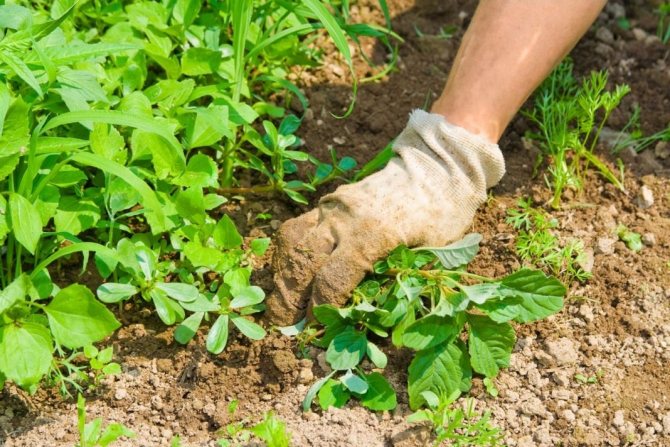

Before you start feeding raspberries, you need to destroy the weeds that have grown near it.
Russia is a large country, and therefore the climatic conditions in its different regions are different. Despite the fact that raspberries are a rather unpretentious plant, you should still observe the timing of its feeding, depending on the place where the shrub grows.
Traditionally, the crop is fed about a month before the onset of the rainy season and about 2–2.5 months before the onset of frost. Colds from Siberia come much earlier than in the central region, therefore, autumn work on caring for the plant should be carried out earlier. Depending on the weather conditions in a particular year, the dates may vary.
Time of work by region: table
| Geography | Feeding time |
| Far East | August 20 - September 10 |
| Eastern Siberia | September 1-15 |
| Western Siberia | September 7-20 |
| Ural | September 10-25 |
| Middle lane, Moscow region | September 15-30 |
| North Caucasus | September 20 - October 10 |
What fertilizers do raspberries need
Most gardeners prefer organic and natural fertilizers.Autumn feeding of raspberries is carried out with manure, compost, chicken droppings, peat, ash, green manure.
In autumn, raspberries are best fed organic.
Once every 3-4 years in the fall, rotted manure or compost is introduced for digging at the rate of 4-5 kg per 1 sq.m. And the soil is mulched with peat (10-15 cm layer) annually for the winter. This allows you to simultaneously protect the root system from cold weather and improve the structure of the soil.
Feeding raspberries with chicken droppings is carried out with caution, since this is a highly concentrated fertilizer. Litter is best used in liquid form. The fertilizer is diluted with water in a ratio of 1:20 and the soil is evenly watered in the raspberry tree.
Wood ash is used after harvest, when the plants lack potassium and need to neutralize the acidity of the soil. About 100 g of ash is scattered in the trunk circle of each shrub.
If siderates (mustard, vetch, clover) grow in the aisles of the raspberry tree, after harvesting they are mown and embedded in the soil. By spring, the green mass will rot and thereby increase the fertility of the soil.
If last year you already used organic fertilizers for feeding raspberries, now it is better to add mineral fertilizers.
What substances does a plant need in autumn
All shrub fertilizers can be divided into mineral and organic fertilizers. In the fall, raspberries need minerals such as:
- Phosphorus, which helps to strengthen the immune system and the development of the root system. It is brought in in the fall, so that during the winter it has time to process and begin to work actively in the spring.
- Potassium, which stimulates metabolic processes. Additionally, it helps to increase the frost resistance of the root system.
- Magnesium has the same function as potassium.
- Microfertilizers (boron, iron, zinc, copper) are introduced only when signs of their deficiency appear.
Organic fertilizers loosen the soil and fill the root system with the nutrients necessary for the growth and yield of the shrub. Organic dressings include:
- bird droppings;
- manure;
- compost;
- wood ash;
- bone flour;
- siderates.


Plain wood ash is an excellent substitute for potash salt
Organic fertilizers are applied only at the root. For greater efficiency, organics and minerals are combined. One type of fertilizer cannot completely replace another.
Fertilizing raspberries with mineral fertilizers
Autumn fertilizer for raspberries can be composed of a mixture of trace elements. The top dressing must necessarily contain potassium and phosphorus. But an excess of nitrogen is dangerous for plants during wintering, therefore, it is not introduced into the soil in the fall.
Raspberry bushes in autumn need phosphorus-potassium fertilizers
Superphosphate is usually used as a phosphorus fertilizer. 55-60 g of granular fertilizer is applied under each adult bush in the loosened soil and embedded to a depth of 7-10 cm. Potassium increases the frost resistance of raspberries, so you cannot do without it either. 40 g of potassium sulfate is embedded in the soil at the same time as phosphorus fertilizer. Instead, you can use potassium magnesium - 25-30 g for each bush. When feeding young bushes, the dosage of mineral fertilizers is reduced by 2 times.
Experienced gardeners recommend not just embedding mineral fertilizers into the soil, but pouring them into grooves about 20 cm deep, previously dug around the bushes at a distance of 30-35 cm.
Chloride potash fertilizers (for example, potassium salt) are best not used for feeding raspberries. Otherwise, the plant may develop chlorosis.
Fertilizers
The basis of autumn feeding is phosphorus and potash fertilizers... Phosphorus is needed to strengthen the root system, and potassium increases the frost resistance of the bushes.
As an organic matter, summer residents use bird droppings, manure, wood ash, compost, bone meal, straw. Many grow green manures.
Important! It is not recommended to use nitrogen-containing fertilizers in the fall, as they have a bad effect on the frost resistance of plantations.Chlorine-containing substances must not be used in raspberries.
Fertilizing raspberries when planting in the fall
Some gardeners prefer to plant raspberries not in spring, but in autumn. In this case, the shrub needs both organic and mineral fertilizers.
Raspberry seedlings are planted 15-20 days before the onset of frost
About 10 kg of rotted manure or compost and 20 g of calcium and phosphorus are introduced per 1 square meter. Mineral fertilizers are simply scattered over the surface of the earth, organic matter is added from above, the soil is carefully dug up and a planting hole is made in it for the seedling.
Now you know how to feed raspberries in August-September. But do not forget that for successful wintering, shrubs need not only fertilizers, but also water-charging irrigation. To do this, in the second half of September, 50-60 liters of water are consumed per 1 square meter of an adult raspberry tree. Then next year a generous harvest of juicy berries will await you, from which you can make delicious raspberry jam.
Gardeners reviews
In the autumn, it is good to use superphosphate in raspberry fertilizer, which can strengthen the branches and they will well endure the winter.
Just Petrovich
Raspberries prefer organic matter, and more specifically, manure. It must be applied in autumn in large quantities, so that during the winter it perekul directly on the beds, which will additionally warm the roots from frost. I use mineral fertilizers, but in reasonable amounts. I spray the leaves with a special complex organo-mineral fertilizer "Growth-berry".
Ludmila
Nitrogen fertilizers are no less good for raspberries and after their application, the shrubs quickly grow stronger and the yield is at a high level.
Masya
It would be nice to bring 3-4 buckets of humus under the bushes every year in the fall, if not, then 3-4 buckets of peat mixed with 100 g of urea or saltpeter. Please note that the use of nitrogen mineral fertilizers in the spring causes active regrowth of coppice shoots and does little for the development of replacement shoots.
butko
Features of preparing raspberries for winter
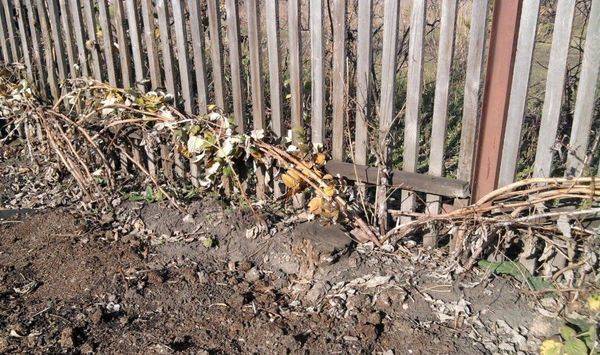

Naturally, raspberries of any varieties (even frost-resistant ones) tolerate winter more favorably under snow cover. Experienced gardeners warn that in severe frosts, flower buds that are not protected by a shelter can freeze out.
After the measures taken to care for raspberries in the fall, preparation for winter is the next stage. Before covering work, you should:
- leaves preserved on the branches are carefully cut off;
- fallen leaves are carefully scooped out and burned.
Some summer residents do not particularly bother with the procedure - they simply tilt the bush to the ground and press down the stems with boards, slate. This method cannot be called universal, since branches are not committed reliably.


It is recommended to use special covering cloths (spunbond, lutrasil). When using the material, its edges are fixed on the ground (you can simply dig in or press down with heavy objects).
If there is no way to specifically cover the raspberries with something, it is recommended to at least fix the bushes at a low height. To do this, a wire or rope is pulled near the rows of raspberries, at a distance of 20-30 cm from the ground and raspberry stalks are tied to them.
In this position, the branches will be covered with snow and will calmly overwinter.
If there is usually little snowfall in winter or strong winds are frequent, a snow fence should be built. It can be sheets of polycarbonate, slate, plywood. Some summer residents cover the soil with straw and cut grass. The mulch will protect the raspberry root system.
Useful video about preparing raspberries for winter from the Sadovaya Head channel:
Folk remedy - kitchen waste
Feeding with kitchen waste is becoming more and more popular. Many gardeners save up cleaning from vegetables and fruits, and then dig all this stuff under the bushes. Essentially, this is a small compost heap underground that attracts earthworms and bacteria.With their participation, waste during the season turns into humus - food available to plants.
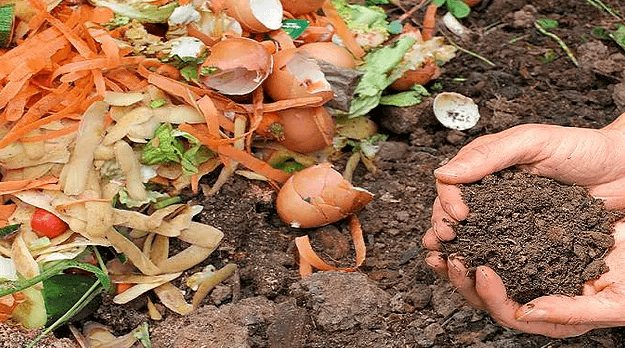

Plant waste and egg scarlops are suitable as a long-lasting fertilizer.
And although humus is rich in nitrogen, cleaning can be injected in the fall. In the cool, living microorganisms and worms are already inactive, the "humus factory" should start working only in the spring, with the onset of heat.
Do not dig pieces of bread under the bushes. They will attract mice and other rodents to the raspberry tree. Also banned are fats, bones, pickles, broths, dairy products. Such wastes take a long time to decompose, salt or acidify the soil, besides, their smell will become a bait for uninvited guests - dogs.
Autumn shrub pruning
An important autumn event is raspberry pruning. it will increase productivity next season.
First, you should cut out unnecessary shoots, form neat bushes. Then in winter the plant will not waste energy on maintaining vital activity in the extra stems.
Secondly, pruning helps fight harmful insects. Raspberry pests and fungi tend to accumulate on top of raspberry stems and leaves, and pruning will help control them.
Fallen leaves and cut branches should be remove from the site... This will help get rid of the pathogenic microorganisms developing in them, which, after overwintering, can destroy the entire raspberry tree in the spring.
On the bush, it is recommended to leave any nine shoots... This is the amount for which the plant has enough nutrients. Pruning is recommended before frost, in October.
Cut off in autumn:
- fruiting shoots
- branches with pests, fungus, old
- young sprouts, will not survive the winter
- broken branches
- useless shoots that thicken the bush


Pruning raspberry shoots that thicken the bush
Gardeners use several types of pruning. The main, often used, are three:
- trimming normal
- double cropping
- trimming for shortening
Regular
Regular pruning - remove 70 percent shoots. Complete removal of the stem is possible. Depends on the variety. If the variety has good vegetation, then the bush is cut off entirely. By next summer it will be one meter high. If growth is slow, then pruning is done by 50 - 70 percent.
Double
It is also called Sobolev pruning. The first pruning is done when one-year-old branches reach 70-100 cm in height. In time, this is the end of May - beginning of June.
Cut off the top 10 - 15 cm... This leads to the growth of lateral branches. By the fall, they grow by 50 cm. Berries will grow on them next season. The main thing is not to be late in time, so that new shoots do not die before winter. A second pruning is done the following spring when the leaves grow. At the side shoots, the tops are cut off by 15 cm.
If everything is done correctly, then:
- the term of fruiting raspberries will increase
- more flower buds are formed on the bush
- yields will increase in summer
To shorten
Pruning for shortening is easy. Bush cut at the root... This method is for varieties that do not give a large yield, which have a low degree of vegetation. This speeds up the growth of two-year shoots, which increases the yield. In addition, using this method, you can control pests by removing them from the garden along with cut shoots.
When doing pruning, you need to remember some rules.
- The cut branches are immediately removed and burned to avoid pest breeding.
- New branches are left as much as old ones are cut.
- The wider the shoots grow, the better.
Popular mistakes in the spring feeding process
- Top dressing is not applied on time. Each type of fertilizer has its own time. If the plant is fed earlier or later than the due date, then the raspberries will not be able to properly use the nutrients.
- Excess or lack of fertilizer. An excess of fertilizer is just as harmful as a lack of it.For example, an excessive amount of nitrogenous fertilizers provokes active foliage growth, which negatively affects the size and taste of the berries.
- Non-compliance with technology. Fertilizers under the raspberry must be applied evenly so that each bush gets its share of the nutrients.
- The use of substandard or unsuitable dressings. Expired fertilizers must be thrown away! By striving to preserve and apply them, you risk causing irreparable damage to the raspberry.
- Application of nitrogen fertilizers with a high chlorine content. Chlorine is a substance that raspberries do not perceive. From a high concentration, the shrub begins to hurt with chlorosis. The main symptom of this disease is yellowed leaves.
Effective drugs
Among organics, the most effective will be the use of chicken manure and mullein.
From mineral fertilizers it is best to use
- Urea and nitroammophos for nitrogen fertilization in spring.
- The drug "Ideal" for complex summer feeding.
- As a foliar fertilizer, most gardeners advise "Kristalon".
- In autumn, after the end of fruiting, it is best to use organic.
Required components
Before fertilizing the soil in the autumn, it is worth familiarizing yourself with the requirements of the culture for certain chemical elements.
For good development of the shrub, the list of components should include:
- Phosphorus. Strengthens the immune system, strengthens the root system. Introduced into the soil in autumn, it affects the plant only after the onset of warm weather in spring.
- Potassium and magnesium. They stimulate internal metabolic processes, increase the culture's resistance to subzero temperatures.
- Microfertilizers (boron, zinc, copper, iron). Recommended for application only if there are signs of deficiency.
How to grow more crops?
Any gardener and summer resident is pleased to receive a large harvest with large fruits. Unfortunately, it is far from always possible to get the desired result.
Plants often lack nutrition and minerals
It has the following properties:
- Allows increase yield by 50% in just a few weeks of use.
- You can get a good harvest even on low fertile soils and in adverse climatic conditions
- Absolutely safe


What raspberries love
The raspberry root system is located at a depth of 50 cm. It depends on how deep the fertile layer is, therefore, the first preference of the raspberry tree is the presence of humus in the soil.
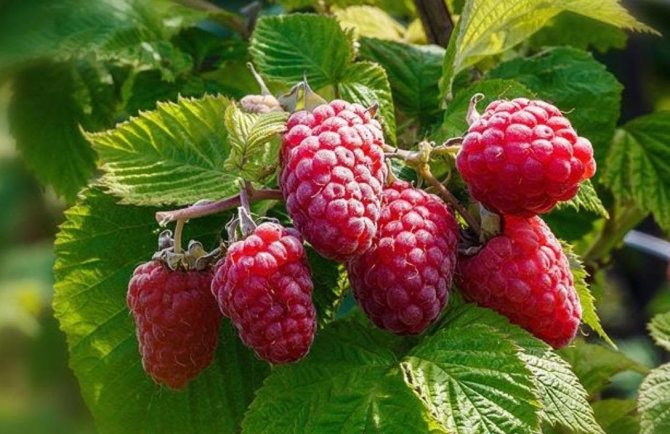

It can be concluded that the fertilizer for raspberries should be mostly organic: ash, manure, green manure. The bigger, the better. Organic substances for feeding raspberries increase the depth of the fertile layer, soil looseness, and the number of beneficial microorganisms in the soil.
Another feature of the nutrition of plants with a fibrous root system is the impossibility of absorbing substances in a dry form. The surface layer dries quickly in summer and autumn, which is why fertilizers for raspberries cannot get to the roots. The soil must always be moist.
This is necessary so that soil bacteria do not stop their activity of processing organic matter and converting it into humus. When dry, part of the microflora dies, and the other part stops working.
To prevent the soil from drying out, the raspberry tree is often watered: at least every other day. Mulching the soil under the roots will help slow down the evaporation of moisture. Mulch prevents weeds from growing, which compete with the raspberry root system for nutrients, and also prevents water from volatilizing from the soil.
The shrub needs to be pruned annually. This contributes to better passability in the aisles and air circulation, and also relieves the plant of old damaged branches, which do not bring benefits, and take food.
In the middle lane, it is advisable to organize heating of the roots in winter.


In very cold regions, raspberries are either not grown, or they devote a lot of time to them so that the roots do not freeze until spring. Use straw or mown green manure, or better, both for mulching. In short, there is always something to do in the fall with raspberries in the garden.
How to determine if you need feeding
You need to feed raspberries every spring. However, there are several signs that additional fertilization is needed. They can be found both together or separately:
- Raspberries grow poorly, branches are thin and weak.
- The leaves of the shrub are small and yellowish.
- The leaf plates completely or partially change their color (become pale, brown, yellow, etc.).
All this indicates that raspberries lack the necessary mineral elements: phosphorus, iron, nitrogen, potassium, etc.
There are 2 ways to apply fertilizers:
- Root dressing (for example, watering under the root of a shrub with a liquid solution).
- Foliar dressing (for example, spraying useful compounds on the leaves and shoots of the plant).
Features of root dressings
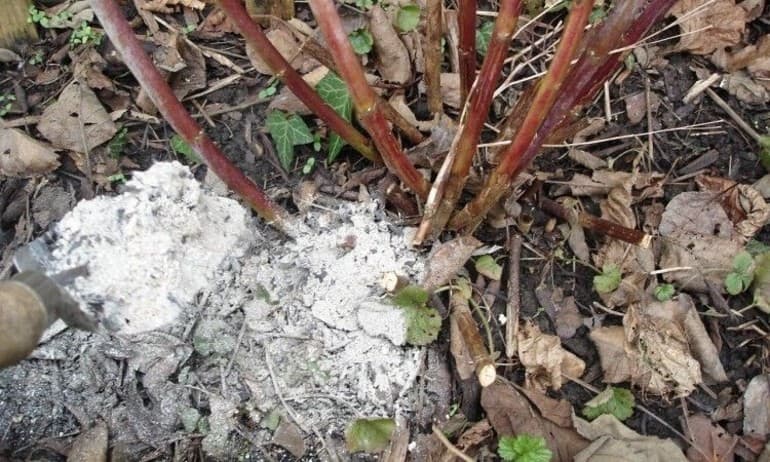

Root feeding of raspberries
In spring, mainly root dressings are carried out. In this case, the nutritional composition can be either in liquid form or in powder form. The earth in the near-trunk circle is preliminarily loosened so that the top dressing is better absorbed. If you apply the preparations in a dry form, then the soil must be dug up later.
The advantage of liquid fertilizer is that it immediately goes to the roots of the plant and does not need to additionally water the shrub.
Foliar dressing
Foliar dressing is of an auxiliary nature. They are designed to saturate the plant with the nutrients it needs through the aerial part.
However, foliar feeding is a great way to fertilize in an emergency. For example, with "heavy" or waterlogged soil, with damage to the roots and the presence of pests.
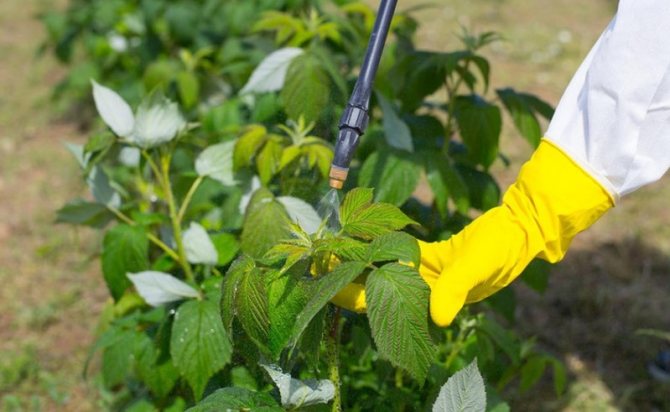

Foliar feeding of raspberries
Timing of pruning raspberries
The optimal time for pruning raspberry bushes is August-September. Many gardeners are of the opinion that the manipulation is best done just before the onset of winter, but this statement is erroneous.
Such late pruning has a detrimental effect on the plants: during the postponement of the manipulation, pests and diseases actively multiply on the branches, which significantly worsen the condition of the bushes and reduce the likelihood of their wintering.
Note! It is best to prune raspberries for the winter immediately after picking the last berries.
Shelter for the winter
Before laying the mulching material, the root collar is slightly sprinkled with earth, and so that the melt water does not have a place to collect, the soil near the bush is leveled. Cut and peeled leaves are strongly bent to the ground and secured with staples. To prevent raspberries from freezing, the height of the bent bushes should be no more than 40-50 cm.
Important! Even a slight peeking of the stems from under the snow should not be allowed, since the buds on them will not tolerate even moderate frosts: the temperature on the surface of the snow cover is the lowest.
The soil on the site and the bent branches are covered with dry straw or foliage. Instead of organic mulch, the stems can be wrapped in plastic, spunboard.
The importance of sheltering raspberries for the winter directly depends on the weather in the growing region. You can not strongly insulate the shrub in the southern regions, since it can dry out.
Snow retention
This type of cover is suitable for areas with strong winds. On the windy side, plywood or polycarbonate sheet is installed. Additionally, they are attached to the trellis.
Features of feeding with nitrogen-containing fertilizers
Any fertilizer must be applied in a timely manner. For example, dressings with a high proportion of nitrogen compounds are applied under raspberries only in spring.
The fact is that nitrogen activates the growth of the green mass of the plant. This is very important in the spring.The faster the raspberry leaves the leaves, the faster the photosynthesis process will begin.
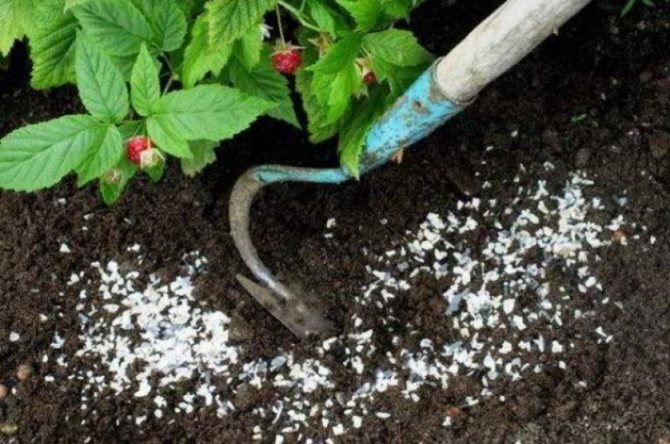

The introduction of nitrogen fertilizers in the spring is mandatory
In summer and autumn, nitrogen fertilization is not worth it. First, it will affect the quality and abundance of the crop. Secondly, the remaining foliage before wintering can cause the death of a shrub from frost.
The most affordable fertilizers with a high nitrogen content are nitroammophoska and urea.
IMPORTANT! Nitrogen causes soil oxidation. Therefore, after adding it, a little ash or lime is poured under the raspberries.
Top dressing during planting
During planting, the preparations are added directly to the holes or trenches.
At this time, organic fertilizing is usually applied, for example, rotted manure. The fertilizer is placed on the bottom of the pit with a layer of 10 cm. Sprinkle it on top with the same layer of earth, and only then a raspberry seedling is placed in the hole.
Experienced summer residents are advised to add 2 tablespoons of potassium salt and superphosphate to organic feeding.
Raspberries need a similar nutrient mixture to take root in a new place.
Autumn watering raspberries
Very often, gardeners are interested in the question, should caring for raspberries in the fall include watering? And if so, how often and to what extent?
The answer to this question directly depends on the weather conditions. If the weather is dry, it is recommended to pour 1 bucket of water per 1m2 of the plantation once every 2 days. Firstly, it will save the plant from premature shedding of foliage, which is necessary for storing nutrients. And secondly, it will prevent the roots from freezing in the event of unexpected frosts. Watering should be stopped when night frosts begin.
Favorable and unfavorable days according to the lunar calendar
In the fall of 2019, the greatest benefits will come from caring for plants on the following days:
- September - 23rd and 24th, from 26th to 30th;
- October - from 1 to 3, 8, from 10 to 16, from 20 to 23, from 25 to 30.
It is not recommended to work with plants: September 25 (full moon), October 9 (new moon), October 24 (full moon).
Caring for raspberries in the fall, preparing for winter does not imply special, difficult events. If you consistently follow all the recommendations of experienced gardeners, then even novice summer residents and gardeners can grow and harvest decent harvests of delicious berries.
The nuances of caring for different varieties
The varietal variety allows you to choose raspberries to taste, according to simple rules of care. It is the correct care of the plants that allows you to collect bulk yields of berries.
The best way to breed raspberries is to plant several varieties. Then it will be possible not to worry about the unfortunate summer season.
Yellow raspberry
This variety belongs to the remontant species. The variety is characterized by long-term fruiting, disease resistance. The plant develops well on sandy loam lands. Features of the variety: root growth does not grow, low frost resistance, does not need special care, has a strong root system.
Raspberry yield is determined by the power of the bush in the first years of life. Therefore, a sufficient supply of nitrogen is very important for the plant. Fertilization is divided into two periods: spring and autumn. The best nitrogen fertilizer is urea (50 g is diluted in a ten-liter bucket of water, a liter of solution is poured under each bush).
In autumn, plants are watered almost before frost. Since the moistened soil increases the winter hardiness of raspberries.
Black raspberry


A perennial shrub can be attributed to an exotic variety - not in every area you will find this original species. Powerful stems with sharp thorns grow 2-3 meters long. For plant nutrition, both organic and inorganic fertilizers are used.
The easiest way is to use complex compositions: bird droppings are diluted in water at the rate of 1:17, 50 g of superphosphate are added to a bucket of solution. It is advisable to apply fertilizer simultaneously with watering or before it.
Depending on the climate, the bushes are left to winter open or covered.
- In the southern regions, you can leave the stems on the trellis, it is only recommended to fix the bush well.
- In regions with severe winters, the bushes are bent to the ground, but not laid on the ground. Cover the plants with special material.
Tree raspberry
These varieties are classified as standard and are considered the most fertile. For breeding, remontant varieties are chosen (berries ripen throughout the season, branches are cut in autumn after harvest) and perennial (does not need pruning).
In the autumn period, the soil in the raspberry grove is enriched with peat and compost. Phosphorus and potassium supplements help the plant develop a strong root system. After applying top dressing, it is recommended to mulch the soil (straw, onion husks, peat).
Raspberries prefer moderate watering, so after harvesting, it is enough to pour about half a bucket of water under each bush once a week.
After the leaves fall off, the bushes are prepared for wintering: the stems are tilted to the ground and fixed. To secure the bush, the branches are tied to trellises or some kind of load is used. When growing tree-like raspberries in regions with a mild climate, you do not need to cover it on purpose - it is enough to firmly fix the plant on the trellis.
Tips for forming the right row
In the fall, you can think about replanting bushes or adjusting rows, although this can only be done by summer residents from the southern regions. Here are some tips for planting raspberries correctly:
- she prefers sunny places, protected from wind and drafts;
- planting can be done when the leaves begin to fall and a white basal bud appears;
- the plants are planted in rows according to the scheme: 70 cm apart and 1.5-2 m between the rows;
- it is recommended to add humus and a small amount of ash to the planting pit;
- if the formation of bushes is planned, then it is recommended to plant two plants in the planting pit at a distance of 10-15 cm from each other;
- when planting, the replacement bud should be several centimeters below the surface of the earth;
- when trenching bushes, you can arrange a trellis, for this, pillars are installed along the row with plants and a wire is attached to them at a height of 1 m, and branches are tied to the wire at a distance of 10 cm from each other;
- when landing, you need to make sure that all the roots look down;
- one-year young shoots, cuttings harvested after leaf fall, and varietal material from the nursery can serve as planting material in the fall;
- raspberries do not like the neighborhood with potatoes, strawberries and tomatoes;
- you can check the quality of planting by pulling the bush, if it does not pull out, then everything is done correctly.
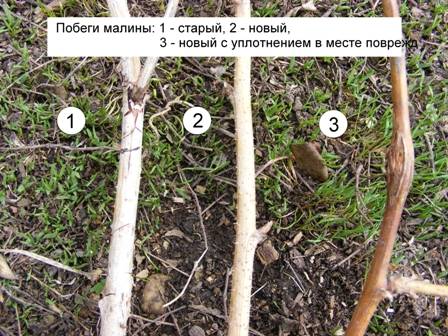

How to identify nutritional deficiencies?
Like most cultivated plants, garden raspberries need regular feeding. Even if the full amount of fertilizer was applied before planting in the area designated for the raspberry tree, over time the supply of nutrients will be depleted. This is due to 2 factors:
- Raspberry roots extract essential nutrients from the soil.
- Abundant summer rains wash away micro and macronutrients from the upper fertile layer, and the bush, deprived of nutrition, begins to starve.
In search of an answer to the question of what raspberries are missing, gardeners are faced with a different situation - a long absence of precipitation. The lack of moisture prevents the supply of the necessary nutrition to the shoots, as a result, the bushes begin to suffer. Harmful to fruit crops and moisture stagnation, impairing aeration.


Plants need additional feeding for other reasons:
- the harsh winter damaged the shoots;
- an overabundance of certain trace elements has arisen in the soil;
- the raspberry tree suffered during the drought.
The most affordable way to identify an overabundance or lack of nutrients is to carefully examine the plant.There is the following relationship between visual changes and the nutrition of raspberry bushes:
- If the plant has thin and easily bending branches, the leaves are small and too light, then it lacks nitrogen. With nitrogen starvation, few buds are laid on the bushes, which means that you should not expect a good harvest. An overabundance of this element is also a cause for concern. The shoots are stretched out, blocking the access of sunlight to the middle of the bush. As a result, the risk of developing diseases increases. The berries in such a raspberry berry become watery, pale in color.
- The leaves are too dark (sometimes with yellowness near the veins), the branches have a bluish tint - this is a lack of phosphorus. If its amount in the bud is minimal, then flowering and fruiting suffer. In spring, the buds bloom on the shoots slowly, little growth is formed.
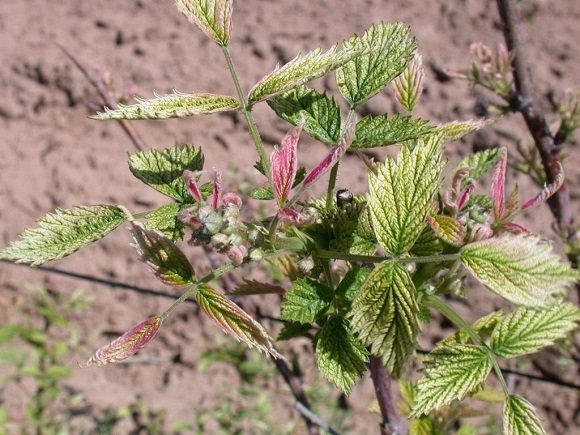

In practice, summer residents often observe a lack of 2-3 components. With a simultaneous lack of phosphorus and potassium, the buds slowly open, the shoots grow for a long time. With a minimum amount of nitrogen and phosphorus, the foliage acquires a light green color and becomes tough. If there is a lack of all 3 components, the raspberry grows weaker, does not bear fruit well, and freezes in winter.
Autumn pest control
The key to a rich harvest next season is the treatment of raspberries from pests and diseases. After harvesting, it is recommended to thoroughly weed the area, loosen the soil to a depth of 10-15 cm. These measures will help get rid of the pests preserved in the foliage and will not allow the larvae to overwinter in the soil.
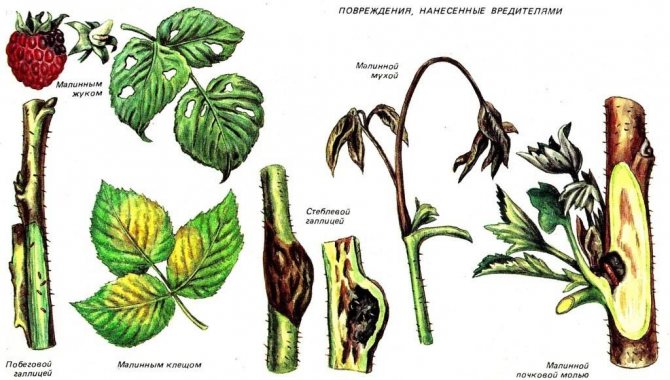

The most common harmful insects include: raspberry beetle, flower beetle, spider mite, stem fly.
Raspberry beetle
It is able to significantly reduce the yield of berries or even lead to the death of the plant. Insects eat buds and fruits. The berries are poorly formed, grow deformed, wither and rot.
Beetles / larvae overwinter in the upper layers of the soil (at a depth of 15-20 cm.
Spider mite
Most often it lives on the seamy side of the leaves. Feeding on plant sap and multiplying, the tick gradually affects all parts of the bush: buds, leaves, shoots. When plants are damaged, flowering stops, the formed buds disappear.
A favorable breeding environment for the pest is thickened plantings, dry weather.
With the active spread of the tick, you can lose up to 70% of the crop. The tick hibernates on fallen leaves, weeds, therefore, the destruction of dry foliage, weeding of beds are the best preventive measures to combat the pest.
Stem fly
It actively develops in the branches of plants, causing the wilting of the shoots. To prevent the spread of the pest, it is recommended to cut off the damaged tops of the stems.
You should not be too zealous - only the upper part of the infected stems is cut. The cut pieces are immediately burned, as the larvae remain in them.
The optimal insect control is the autumn application of insecticides. Several tools have proven themselves well:
- Funafon - 10 ml of the product is diluted in a ten-liter bucket of water. A liter of solution is enough to process one bush;
- Intavir is available in tablets. Dissolve one tablet in a bucket of water;
- Actellik - sold in 2 ml ampoules. To prepare the solution, dilute one ampoule in two liters of water.
A solution of copper / iron sulfate can protect the bushes from lichen, moss or fungi. To increase the effect, it is recommended, in addition to plants, to process the soil near raspberries.
Feeding stages and schemes
The general scheme for feeding raspberries is as follows:
- Top dressing during the period of appearance and swelling of the kidneys.
- Fertilization during the period of emergence and blooming of leaves.
- Top dressing during the flowering period.
- Fertilization during fruiting to improve palatability and yield.
- Preparing the raspberry tree for wintering.
INTERESTING! Some summer residents carry out the first feeding of raspberries even before the snow melts, so that nutrients are absorbed into the soil along with melt water.


